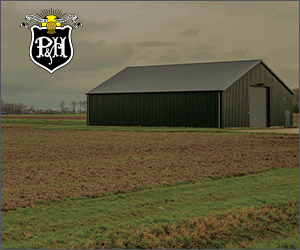Certified seed
AN INVESTMENT IN YOUR FUTURE
“GROWERS?IN?ONTARIO are making record profits this year, and it’s time to reinvest in genetics,” says Peter Johnson, Ontario Ministry of Agriculture, Food and Rural Affairs wheat program lead.
“Some growers say that the cost of certified seed is too high, but at the same time, they expect more and better varieties to choose from year after year. All the development costs are being carried by the few farmers who purchase certified seed and that’s dangerous for all growers.”
It’s true that the price of certified seed was lower five to ten years ago, but this is mostly due to higher certified seed use then compared to now. Surveys conducted by the Canadian Seed Trade Association (CSTA) show that the percentage of Ontario’s winter wheat crop planted with certified seed declined from about 60 percent in 2004 to about 38 percent in 2011. (The Ottawa-based CSTA, a group of 130 member companies ‘working to foster seed industry innovation and trade,’ does not currently have accurate information for other types of crops in Ontario.)
Some farmers have the opinion that seed companies are making lots of profit already, and that new and improved varieties of seed will be produced no matter how much or how little certified seed is purchased here. Johnson does not agree. “We need seed that is adapted to our soils, our weather, our disease pressures. There is significant risk of losing seed company players if the current situation continues,” he says. “How low does the cost need to be to get a significant number of growers to use certified seed? Anything else is a no-win scenario.”
increased yields
There are currently four wheat varieties in the Ontario Crop Trials that are giving 110 percent yield compared to the average yield of all varieties. “We are picking up significant yield increase from new genetics,” Johnson explains. “We must support the companies to continue providing breeding improvements. This year, wheat is $7.50 or $8 a bushel. If you can’t take some of that profit and invest in new research in order to stay viable in the future, you have no long-term vision at all. This year, buy certified seed.”
Johnson and others also make the point that bin-run seed is far from free, and that quality control can be a problem. Bin-run seed must be cleaned and treated, and often, germination tests are also required. “It is a little cheaper at the outset, but in the long run, it’s not,” Johnson asserts. “And of course, certified seed has a risk-assurance program with it to make sure there’s a crop, and all the support staff to go with that is provided.”
“Surveys indicate that most farmers recognize that certified seed is superior,” says CSTA Chief Executive Officer Patty Townsend. “Our most recent surveys done in 2005 found that the majority of Ontario farmers believed that certified seed delivered consistent and reliable quality, and also facilitated investment in new, superior varieties.” Townsend says that in addition to increased investment in new genetics for improved productivity and guaranteed quality (backed by accredited testers and graders), certified seed assures reduced input costs and access to new markets.
“The real difference between saving seed and purchasing certified seed is assurance,” Townsend says. “In the short-term, farmers who purchase certified seed can be assured that the seed has met very high quality, varietal and mechanical purity standards, established in regulation and subject to inspection and verification systems. In the long-term, they can be assured that they have made an investment in their future, an investment with proven returns.” Analyses done for the CSTA by the George Morris Centre showed that the introduction of just eight new varieties to Canadian markets in 2006 and 2007 generated increases in farm revenues of over $170 million.
return on investment
Townsend says seed companies have demonstrated that where they can generate a return, they invest. “The cost to bring a new variety to market ranges from about $900 thousand to well over $1 million and it can take up to 12 years,” she notes. “That kind of investment cannot be made without the ability to recover the costs.” Townsend says private sector seed companies invest over 26 percent of their combined operating budgets in plant breeding and research. “It’s pretty safe to assume, given the track record, that if more producers buy certified seed, companies would have more funds to invest in the development of new varieties for farmers,” she says. “The sale of certified seed is the primary mechanism to generate funds for investment.”
CSTA stats show that over the past 15 years, canola, Ontario corn and Ontario wheat yields have increased 27, 59 and 62 percent respectively, with pea yields increasing 25 percent over the past 30 years. These gains are mostly due to genetic improvements. Townsend says that scientists estimate that between 1982 and 2007, 60 percent or more of the increases in world wheat yields were the result of plant breeding, and there is potential for breeding and genetic research to generate another 30 to 40 percent gain by 2030. “If farmers invest in certified seed,” she says, “seed companies and their partners are empowered to achieve those gains.”
Visit www.seedforthefuture.ca for more information on certified seed. •






















